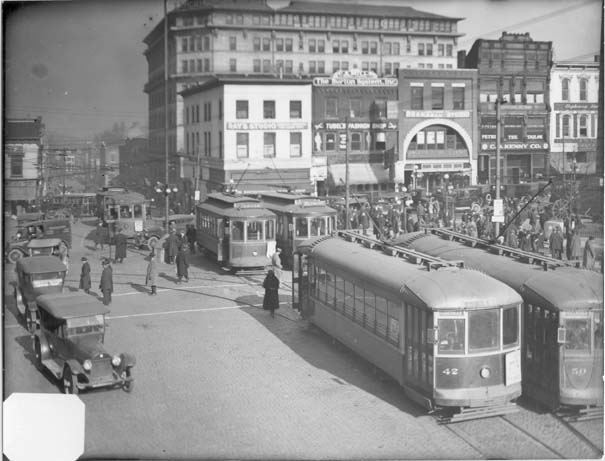In October 1920, amid the often forgotten, yearlong economic depression that lasted until July 1921, Asheville Power & Light Co. submitted a petition to the State Corporation Commission in Raleigh to increase local streetcar rates from 6 to 8 cents per ride.
The move did not go unnoticed by the public.
“The people of Asheville have nothing but friendship for their public service corporations,” noted an editorial in the Jan. 8, 1921, edition of The Asheville Citizen. “They do not wish these companies to serve them at a loss.” But a 2-cent increase in price, the paper deemed, was an “oppressive” figure.
A few days later, The Asheville Citizen reported that the state commission had postponed APL’s hearing. By February, the commission ordered APL to allow city officials to appraise the company’s properties.
The corporation refused. In a letter to Mayor Gallatin Roberts, which the paper published in its Feb. 9, 1921, edition, APL’s general manager, H.W. Plummer, wrote, “We cannot see our way clear to opening our books for inspection … for the reason among others, that it would likely result in further adjournment of a case already too long delayed.”
The move did not sit well with the public. Over 11,000 residents signed a petition asking the state commission to deny the rate increase.
“The Asheville Power and Light company prejudiced its case seriously with the people of Asheville when it refused to grant … the City free access to its books and records,” The Asheville Citizen wrote in its Feb. 10 edition. “It raised a strong presumption in the minds of many people that the company was trying to conceal from the City its true financial status[.]”
On April 29, 1921, the paper reported APL’s decision to withdrawal its application. Plummer offered no explanation to reporters about the move.
Two days later, in a letter to the editor, Asheville resident Thomas J. Rickman cheered the decision. Within the same missive, he also proactively outlined reasons why APL should refrain from ever raising its gas rates, a move that was also being pursued by the company.
“It may not be as well known to the entire management of this most highly appreciated corporation, as it is to some of us natives that this Western North Carolina, the garden spot of the world, is nevertheless in the main ‘a poor man’s country,’” Rickman wrote.
“It is perhaps as easy a place as may be found in America for a man to till a small acreage and get an abundant living for himself and family,” Rickman continued, “but such an husbandman cannot become in the ordinary three scores and ten years of his life, either a Vanderbilt, or a Rockefeller.”
Rickman concluded his letter with a detailed account of the city’s haves and have-nots, writing:
“Hence our argument, the boarding-house keeps are not rich, the carpenters must economize, so of all the other craftsmen — the clerks and the salespeople must live economic lives — the doctors can live as they please, but we can vouch for about 100 lawyers in Asheville, that their pocketbooks are in no wise bulging. It is a source of great pride, as well as one of the greatest benefits, that we have some wealthy citizens, but not enough, if they cared to do so, to supply the street railway company with sufficient patronage to make its wheels turn.
“So, Mr. Street Car and Mr. Gas and Electric Company, we are a common people, with common income — we are good patrons of your company, but we are forced to economize, we need as low fares and as low gas and light rates as possibly can be given us, and when you give us such rate we will give you so much greater patronage that you will make more money than if you charge the higher restricted rates. This will be found to be the truth and it is now no secret that the railroads have well nigh killed the goose that lays the golden eggs, by excessive freight and passenger rates. The people can only stand so much and they have been overtaxed.”
Editor’s note: Peculiarities of spelling and punctuation are preserved from the original documents.




Fun, historically informative article. Thanks!
I do understand that was a huge increase. That’s one hundred years ago so that is just like $6 raised to $8. I wonder if they were still in use in Ashville as is San Fransico if those prices are to be?